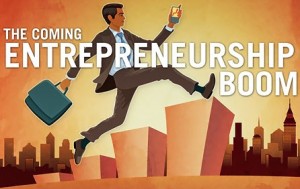 Venture Capital firms have been in existence for years, yet they do not always bring in as much money as they would hope. This year, however, is different. Since 2016 began, these types of firms have been able to collect money at a rate greater than they have in fifteen years. More surprisingly, they are managing this feat even as the valuation of many startups begins to drop. Even as ‘unicorn’ startups become less enchanting in Venture Capital, investors are still reaping rewards.
Venture Capital firms have been in existence for years, yet they do not always bring in as much money as they would hope. This year, however, is different. Since 2016 began, these types of firms have been able to collect money at a rate greater than they have in fifteen years. More surprisingly, they are managing this feat even as the valuation of many startups begins to drop. Even as ‘unicorn’ startups become less enchanting in Venture Capital, investors are still reaping rewards.
Venture Capital firms have been able to raise over ten billion dollars since the beginning of the new year, at an astonishing rate. It turns out, while investments in startups are slowing, investments in Venture Capital firms are not. Of course, this was predicted last year. When polled, the majority investors in these funds announced that they would continue to match or increase the amount of money they were giving to firms. The firms, however, are the reason startups are having more trouble raising money.
Why is this, exactly? Well, IPOs did not have a good year in 2015. The market was unpredictable, and new companies focused on technology were not as impressive as they have been in previous years. The Venture Capital firms have chosen to dole out money more slowly because startup valuation keeps going down. They are simply not sure which companies are going to make money, and which will remain stagnant or fail. Entrepreneurs who take the billions in Venture Capital raised as a good sign must keep this in mind.
Venture Capital firms that are amassing this money have a few options for where to go from here. They seem to have given up on pouring money into late-stage startups, but may continue to focus on early-stage companies. At least early-stage investments have the ability to give investors a portion of return, therefore this may be the most viable option for Venture Capital firms.
However, this also calls into question how this will affect the slowing entrepreneurial boom in the United States. Of course, if Venture Capital firms choose to invest in early-stage startups, fresh faces in the startup world need not worry. However, that leaves later-stage startups out to dry. If the funding continues to shrink for these late-stage companies, which I suspect it will, we may see an increase in startups trying to exit more quickly than they would normally, or than others have in the past.
Now, entrepreneurs must focus on generating a positive cash flow. This is the only way to make sure that startup companies stay afloat, which may bring in additional funding along the way.

 Founder of the successful venture capital firm Draper Fisher Jurvetson, Tim Draper, recently developed an entrepreneurship boarding school in Silicon Valley called Draper University of Heroes. As the education industry is changing due to increased technology, education developers must innovate to increase student achievement in the classroom. While multiple people told Tim that entrepreneurship cannot be taught, he tried to find a way to make this possible through education.
Founder of the successful venture capital firm Draper Fisher Jurvetson, Tim Draper, recently developed an entrepreneurship boarding school in Silicon Valley called Draper University of Heroes. As the education industry is changing due to increased technology, education developers must innovate to increase student achievement in the classroom. While multiple people told Tim that entrepreneurship cannot be taught, he tried to find a way to make this possible through education. Three years ago, Maja Svensson left her big corporate job to create her own business. She created Elsa and Me, a fashion business based out of New York City. In the three years since she started the endeavor, she has learned many things from the various periods of up and down. As a result, she recently completed an
Three years ago, Maja Svensson left her big corporate job to create her own business. She created Elsa and Me, a fashion business based out of New York City. In the three years since she started the endeavor, she has learned many things from the various periods of up and down. As a result, she recently completed an  What are the public policies needed for a city to increase their entrepreneurship growth? In a recent article done by Entrepreneruship.com, they discuss actions taken by different mayors from their respective cities, and the policies and actions that they are taken to improve local economic growth.
What are the public policies needed for a city to increase their entrepreneurship growth? In a recent article done by Entrepreneruship.com, they discuss actions taken by different mayors from their respective cities, and the policies and actions that they are taken to improve local economic growth.